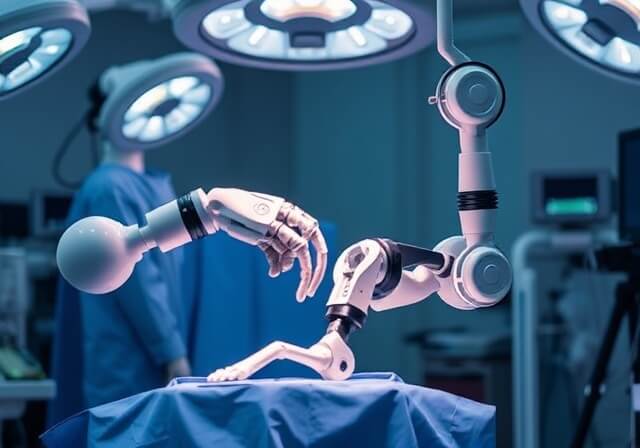Adaptive Robotics: Generative AI and Intelligence Automation are the latest technologies transforming and reshaping the world of industries. They enhance decision-making, problem-solving, creativity, resource conservation, and efficiency.
These transformations in technology, such as AI and automation, help and empower organizations to manage tasks, enhance personalized experiences, and solve critical and complex challenges with pinpoint accuracy and adaptability.
Understanding the concept of artificial intelligence
Generative AI is an advancement of AI that creates ideas, data, images, videos, and blogs and designs new structures from the given commands and inputs. It uses advanced machine learning concepts.
It can generate human-like responses and provide unique and creative solutions to your problems, give suggestions about businesses, market your brands, etc. It is a diverse tool because it has knowledge about almost every possible field, from healthcare to entertainment.
Intelligence Automation
AI and automation is a concept of combining RPA (robotic process automation) with AI-integrated technologies. It is used to perform repetitive tasks at low cost and time.
It’s unlike traditional automation, which performs only particular or predefined tasks. Generative AI can adapt to new situations, learn and generate new ideas. It uses machine learning (ML), natural language processing (NLP) and cognitive automation.
Why does Intelligent Automation need a revolution?
There are so many reasons that the evolution of AI is essential:
-
Creativity and Innovation
Now, advanced AI can generate new and unique ideas by itself. Furthermore, it is capable of developing solutions to your unique problems. You can design, build, market, write, etc, to make industries competitive.
-
Adaptability and flexibility
Generative AI is now empowered to adapt to new situations rather than working on predefined commands and data sets. They can adjust to real-time data and manage schedules and resource availability.
-
Improved personalization and problem-solving nature
AI can now develop and customize products, services, and data to enhance customers’ experiences, creating customer satisfaction and loyalty. Moreover, AI can solve everyone’s unique challenges in vast fields such as healthcare, entertainment, finance, education, government, logistics, tech, etc.
-
Adapting new learnings and improvement
Generative AI can adapt new learnings through training and adaptive algorithms to adaptive robotics. This aspect of AI that it can learn with time promotes continuous improvement and enhancement in AI.
How does AI contribute to automation?
Intelligence Automation learns through advanced neural network architecture and real-time data-driven strategies:
-
Model Training
AI models such as Generative Adversarial Networks (GANs) or Variational Autoencoders (VAEs) continuously learn to generate new ideas through large datasets, databases, and real-time situations.
-
Task Automation
AI can automate or schedule tasks like content creation, report generation, or personalized project development. It can generate content for articles, blogs, social media posts, and design music.
-
Decision-making and integration with different technologies
Generative AI helps in decision-making by visualizing the data, insights, portfolios, and strategies. Further, it can assist us in generating new data, such as making a finance report of a business or a complete business plan. It can recognize voices and images and develop new and improved systems.
Advantages of Generative AI in the automation industry
Intelligence Automation offers multiple benefits:
- Improved creativity
- Streamlined processes
- Enhance content creation
- Provides advancement and quality in content
- Provides personalized AI recommendations and interactions.
- Saves time and money
- Adaptive to society, market and situation.
Creating and Implementing a generative AI model
To integrate a real-time chatbot into your business, follow the mentioned steps:
- Identify Use Cases of your problems and tasks
- Access data quality for the training of models.
- Select suitable models like GANs, GPT, and VAEs, depending on your requirements.
- Train your models.
- Integrate different technologies with your platforms.
- Develop workflows for reliability and scalability.
- Monitor performance and provide real-time data.
- Iterate and optimize models based on given feedback.
In summary, generative AI and automation present the future of creative, efficient, and adaptive systems. By combining AI and ML, businesses can transform their performances.






